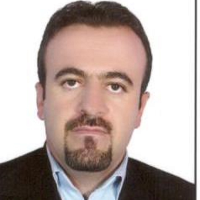Spatial Analysis of Minerals in Drinking Water Distribution Network in Kurdistan Province’s Villages using the Geographical Information System
Today, environmental pollution, including water pollution, has become a global issue, and human life is dependent on the safe drinking water. This study aimed at spatial analysis of minerals and heavy metals in drinking water distribution network in Kurdistan Province’s villages.
In this descriptive-analytical study we assessed the concentrations of nitrate, nitrite, total soluble solids, fluoride, arsenic, lead, and cadmium in drinking water of all villages connected to water distribution network (1524 villages) in Kurdistan Province from 2015 to 2017. To describe the concentrations of the studied chemicals, spatial distribution maps were plotted using Arc GIS V. 10.3 software. Other statistical analyses including the analysis of the mean difference of the concentrations of nitrate, nitrite, and total soluble solids in the studied cities were performed by one-way analysis of variance using SPSS V. 22 software.
According to the results of this study, tap water in 1485 villages of Kurdistan Province (97.44%) contained nitrate and the amount of this ion in the drinking water of 31 villages (2.03%) was above the national and WHO standards. The mean concentration of total soluble solids in Bijar City was significantly higher than that in other cities (P <0.001). The mean concentration of fluoride in the drinking water of rural areas of Kurdistan province was 0.19 ± 0.25 mg/l, which was lower than the value determined by national standard of Iran (0.5-1.5 mg/l). The concentrations of arsenic in the tap water of 47 villages of Bijar (23 villages), Qorveh (11 villages), Saqez (7 villages), Dehgolan (5 villages), and Kamyaran (1 village), respectively, were higher than the maximum permitted value.
Continuation of the current trend, especially in agricultural sector and uncontrolled use of groundwater resources in agriculture, will lead to decreased water quality. Therefore, it is necessary to monitor agricultural activities and use of fertilizers.
- حق عضویت دریافتی صرف حمایت از نشریات عضو و نگهداری، تکمیل و توسعه مگیران میشود.
- پرداخت حق اشتراک و دانلود مقالات اجازه بازنشر آن در سایر رسانههای چاپی و دیجیتال را به کاربر نمیدهد.



